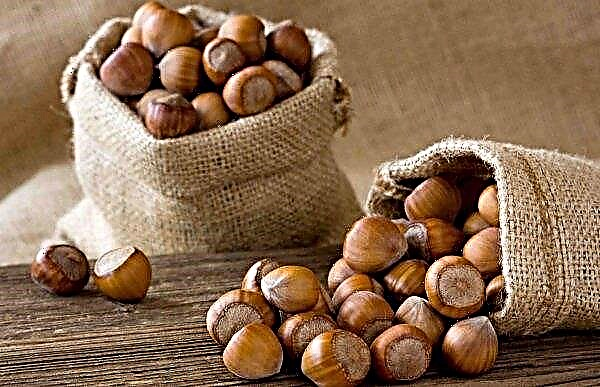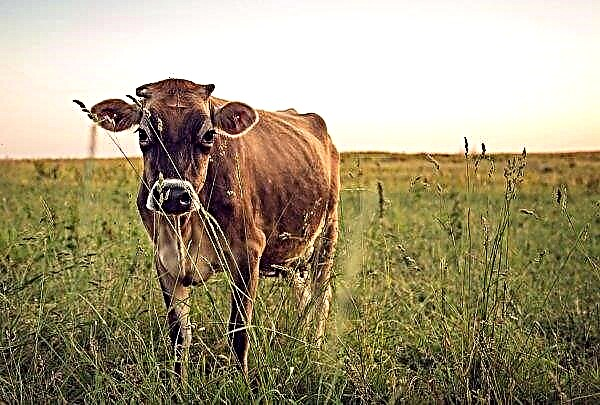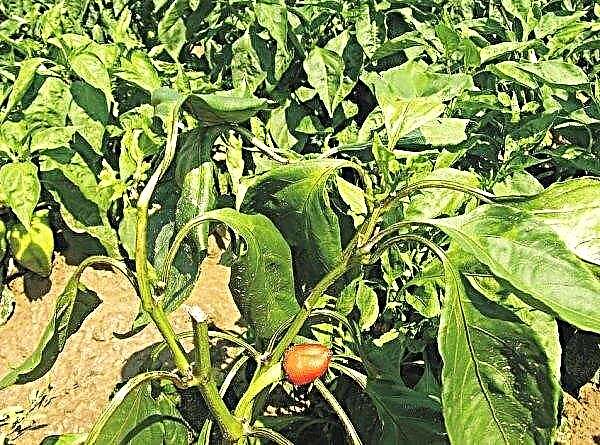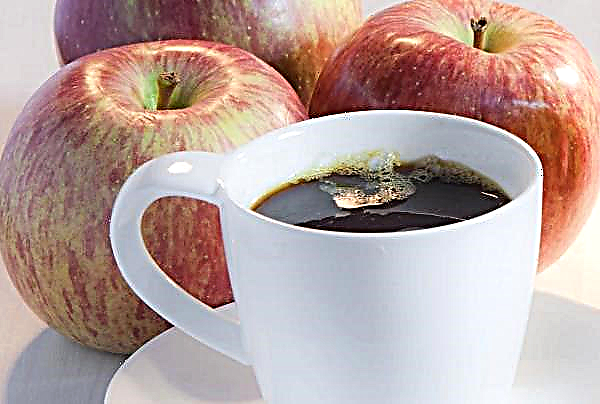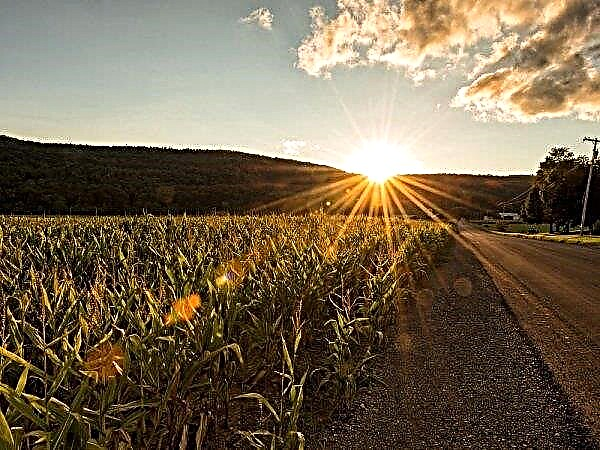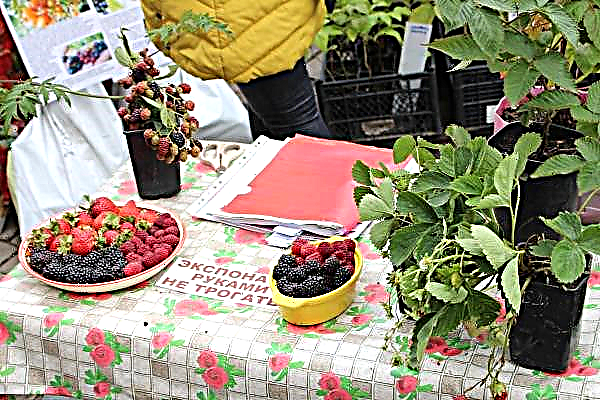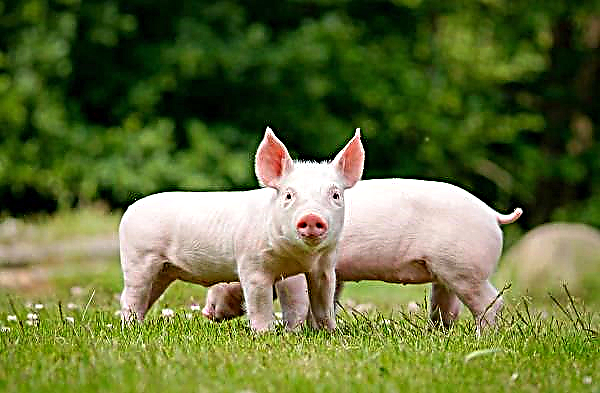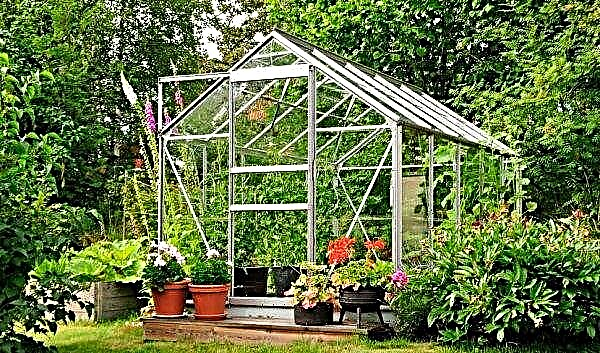Mini-greenhouse is useful for growing seedlings or special plants at home. Below are the main functions and varieties of such structures, as well as detailed instructions for self-manufacturing.
The main functions and principle of the greenhouse
A small-sized greenhouse can be installed both in the apartment and in the open air. It will provide the necessary microclimate for sensitive young shoots of vegetable and flower crops, as well as for capricious indoor plants.
Did you know? The greenhouse complex in the capital of Belgium near Laken Castle was built in the 19th century and covers more than 25,000 m². A huge collection of plants is opened to visitors only once a year, during the period of mass flowering.
The design performs its functions due to the material of which its upper part is made. The transparency of the surface allows sunlight to freely penetrate the soil and plants, warming them, and the closed loop of the greenhouse retains heat and moisture inside.
The upper part can be made of:
- glass;
- polycarbonate;
- plastic film or agrofibre.

The mini-greenhouse differs from the greenhouse in the following properties:
- small size;
- lack of heating;
- lack of special irrigation systems.
Greenhouse Benefits
- The installation of mini greenhouses has become popular due to the following advantages:
- compactness, convenient placement on a windowsill or site of any size (depending on the purpose);
- protecting plants from external factors and creating favorable conditions for growth;
- simple installation and installation;
- easy access to planted plants;
- a greenhouse can be used for hardening seedlings.

Varieties of greenhouses
Mini-greenhouses often copy the design of large greenhouses, differing only in size. The choice of a particular design is dictated by the characteristics of the site, the availability of available materials and the personal preferences of the gardener.
Arched
Arched structures are reliable and can, if necessary, be easily transported or removed. The frame usually consists of plastic or metal pipes, onto which a dense plastic film is then stretched.
The hanging ends of the shelter are sprinkled on three sides with earth or fixed with bricks, and on the last long side they are pressed with a long heavy object (log, crowbar, etc.). On the fourth side, it will then be possible to bend the film up to gain access inside.
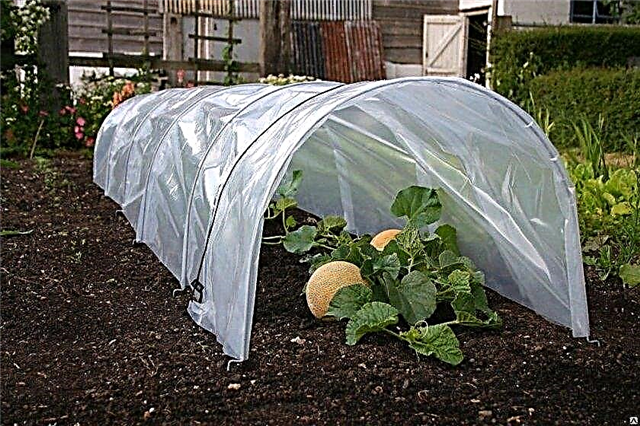
Belgian
The Belgian greenhouse will require digging a trench, and then strengthening its walls with a harness. The trench protects the garden, and the entire structure is covered with a shed roof made of polycarbonate or a film frame. The earth walls of the trench are an excellent heat insulator.

Figurative
A portable greenhouse is convenient during spring frosts, when young seedlings are only planted in open ground. The basis is a wooden box without a bottom with a hinged lid, in which glass is installed or film is stretched. In this design, you can use small old window frames.

Butterfly
This model got its name because of the upward opening wings. In the raised position, two wings resemble butterfly wings. Moreover, the general profile of the structure can be both semicircular and trapezoidal. It does not require a special foundation.
This design allows you to approach the contents of the beds from two sides, and by adjusting the degree of opening of the leaves, you can change the microclimate inside. It is worth noting the high resistance of the "butterfly" to a strong wind.

Bread box
Such a greenhouse completely copies the principle of operation of a traditional bread box. The first half of the roof of the semicircular profile leans upward on the hinge, while shifting beyond the second half. Thus, the “bread box” always occupies a fixed place in space. The design is possible with one moving half and two. To fix the sash in the open position, it is necessary to provide a special block or bar.

DIY mini-hotbeds from improvised materials
A small greenhouse can be made independently. When placing the structure in the open air, it is necessary to choose the right location. At home, mini-greenhouses are installed on a windowsill or loggia.
Important! The width of the beds in the greenhouse with one-sided access should not exceed the length of the outstretched arm. When accessed from two sides, this value can be doubled.
Material selection
The simplest shelters for germinating seeds and small seedlings are made of transparent plastic containers, such as packaging for convenience foods or eggs, as well as bottles.

For greenhouses on a personal plot, the following materials are suitable:
- plastic or metal pipes, for example, old fittings can be useful for the manufacture of arch structures;
- wooden boards and planks can become a portable greenhouse or the basis for a “butterfly” or a “bread box”;
- window or balcony frames with glass that are unnecessary after repair are suitable for a Belgian or portable greenhouse;
- for a stationary greenhouse, you can make a base of brick;
- agrofibre - the simplest shelter that lets in enough light and heat, while allowing it to penetrate inside and moisture. A great option for temporary protection after planting seedlings in open ground or hardening;
- the polyethylene film most suitable for the greenhouse has a density of 120-200 g / m²;
- polycarbonate is easy to cut, has lightness and strength, which brought this material great popularity in the construction of greenhouses and greenhouses.
Important! The greenhouse on the site should be located away from tall trees or hedges so that the shadow does not fall on the plants.
Step-by-step instruction
For the independent manufacture of the simplest arch greenhouse, the following algorithm of actions is needed:
- To buy plastic or metal pipes, you can use reinforcement rods with a diameter of 1 cm. The length of one arch will depend on the dimensions of the greenhouse. For example, for a bed 1 m wide with a desired height of 50 cm, the length will be 157 cm (according to the circumference formula) and 20 cm should be added to the soil. In total, 197 cm is needed per arch. To calculate the number of arches, you need to divide the total length of the greenhouse (in cm) by 40 and add 1. For example, for a greenhouse 200 cm long, you need 6 rods.
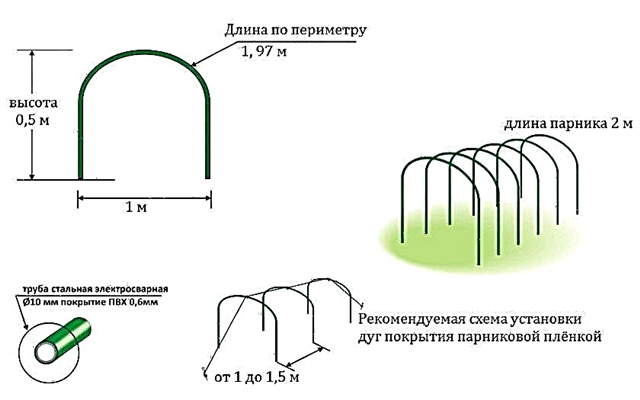
- Choose agrofibre or film. It will take a cut 20 cm wider than the length of the arch and a length equal to the sum of the length of the greenhouse, its two heights and another 30 cm. For the construction considered above, you will need a cut 177 cm wide and 330 cm long.

- Rods or pipe sections are bent in a semicircle, achieving the required diameter of the semicircle.
- The ends of the arches are preferably treated against corrosion (paint or special compounds).
- According to the previously applied marking, dig the rods to a depth of 20 cm, observing the distance between the arches of 40 cm.
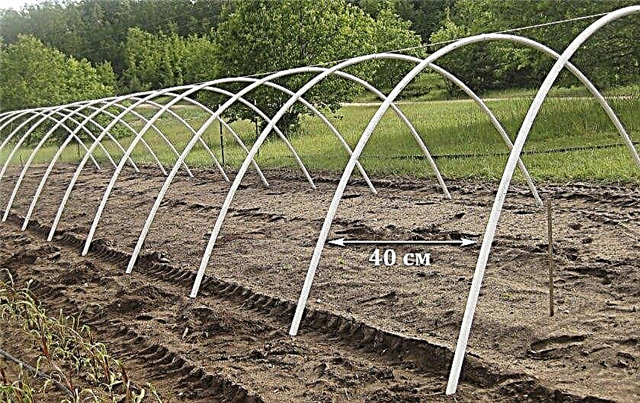
- Pull the film or agrofabric onto the frame so that 20 cm remains on the long sides, and 50 cm on the short sides.
- Fix the edges of the shelter on the short and one long side. On the second long side, provide for temporary fixation, for example with a log or stake, so that it is convenient to raise the film.
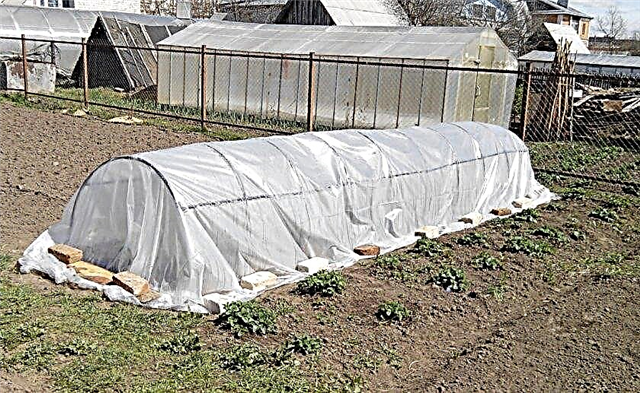
A portable mini-greenhouse can be quickly made from wood and film.
The scheme of actions in this case is as follows:
- In accordance with the available boards, calculate the size of the greenhouse. For ease of movement, the length of such a structure should not exceed 2 meters.
- 4 boards cut to the selected size are fastened together with each other in the form of a frame with nails or with the help of furniture corners.
- From the wooden slats they put together a frame on which the film is pulled. If the farm has a small old window frame, it can be used as a cover for such a greenhouse. Then the size of the whole structure is initially adjusted to the size of the window.
- A cover with a film or a window is attached to the main frame with two door hinges. A handle is mounted on the frame for convenient opening.

A mini-greenhouse can significantly improve the growth of seedlings of vegetable and flower crops, as well as protect young plants in the open ground. You can assemble such a structure for a summer residence from available materials, using the proposed recommendations.





